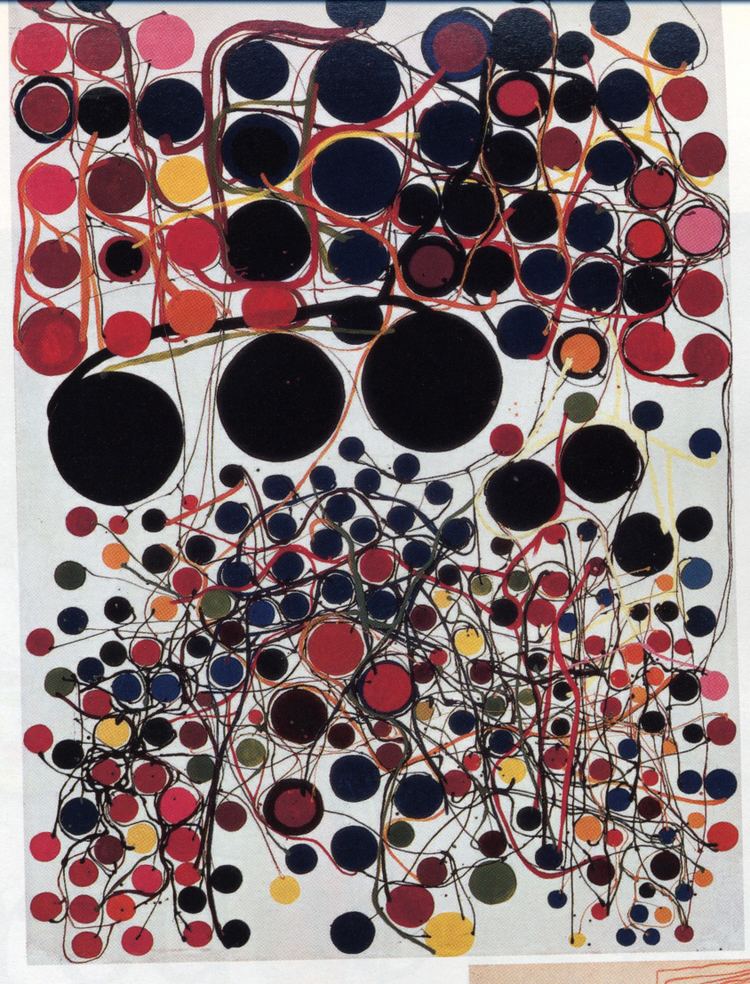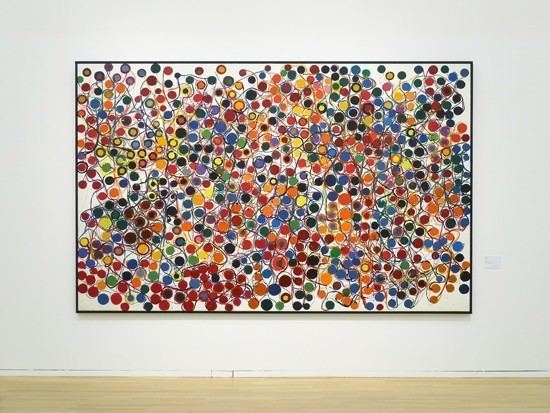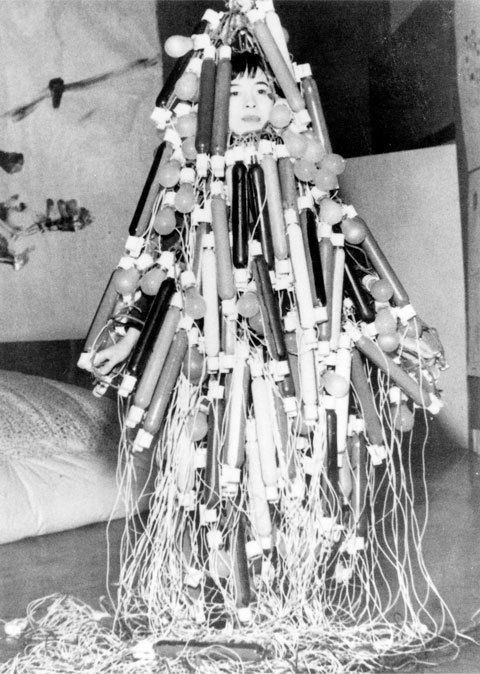Name Atsuko Tanaka Role Artist | Period Modern art | |
 | ||
Known for | ||
Memorial for artist atsuko tanaka
Atsuko Tanaka (田中 敦子, Tanaka Atsuko; February 10, 1932 – December 3, 2005) was a pioneering Japanese avant-garde artist.
Contents
- Memorial for artist atsuko tanaka
- Atsuko tanaka el arte de conectar producciones la hormiga
- Biography
- Involvement with the Gutai movement
- Work
- Atsuko tanaka el arte de conectar
- Dearest by jun and nikaido aki toyosaki and atsuko tanaka
- References

Atsuko tanaka el arte de conectar producciones la hormiga
Biography

Tanaka was born in Osaka, on February 10, 1932. She went to several local art schools where she worked in mostly figurative mode. The schools she had attended were the Art Institute of Osaka Municipal Museum of Art in 1950, and from 1951 on, the Department of Western Painting at Kyoto Municipal College of Art (now Kyoto City University of Arts).

There, she had made friends with a man named Akira Kanayama, who had helped her explore new artistic territories. In 1955, she joined the Gutai group, an avant-garde artists' movement, to which she belonged until her marriage with Akira Kanayama in 1965. In the same year, Tanaka had left Gutai with Kanayama. She moved in with him in a house at the temple Myo*ho*ji in Osaka. She produced most of her works at home and in the second floor of her parents’ house, which was ten minutes away from where she had lived.

In 1972, Tanaka and her husband moved from Osaka to Nara. On December 3, 2005, she died of pneumonia, aged 74.
Involvement with the Gutai movement
In 1955, Akira Kanayama had introduced Tanaka to his colleagues in an experimental art organization which he had founded called Zero-kai (Zero Society); she had soon joined this association. In the meantime, a skillful easel painter named Jiro Yoshihara had been offering private lessons in Western-style oil painting. After being influenced by the many abstractionists in Tokyo, Yoshihara had developed a new kind of art practice that would, in his words, “create things that have never existed before.” In 1954, Yoshihara, accompanied with his young colleagues had founded the Gutai Art Association.
Gutai artists had been known to be one of the first to carry out “happenings”; the physical actions they were involved in were documents of the actions, and the actual performances of the pieces. This brought on a new type of art, known today as performance art. Their creations weren’t influenced by doctrinaire theory; they focused more on playful, whimsical inventions. Similarly, Tanaka had displayed the same type of whimsical inventions through her work.
Work
Tanaka’s pieces can be seen as abstract works that rejected conventional notions of how works of art should appear or “perform.” Tanaka's works, which include abstract paintings, sculptures, performances and installations, generally feature objects from everyday life: textiles, door bells, light bulbs and the like. One of these pieces, called Work Bell, produced in 1955, consisted of a string of electric bells laid out around the border of a gallery; the piece included a button for visitors to press which consequently set off a chain of shrieking rings. Another one of her works, called Work (Yellow Cloth),executed in 1955, Tanaka had taken long pieces of plain, dyed fabric and tacked them to a gallery's walls, creating 'paintings' that removed any suggestion of human handling from their forms and surfaces. Her piece, Stage Clothes, produced in 1956, consisted of gigantic stick-figure frames draped with fabric and light bulbs, and an immense red dress with sleeves 30-foot (9.1 m) long sleeves. This turned out to be a multi-part ensemble that she wore at a Gutai performance. She had peeled off each layer rapidly in a costume-changing routine. Tanaka literally inserted her body into the work of art, making herself a part of the performance.
Her best-known work is Electric Dress, invented in 1956, a burqa-like costume consisting of electrical wires and lit-up coloured lightbulbs. Tanaka wore the dress to exhibitions. Her inspiration for her signature work Electric Dress was from a pharmaceutical advertisement illuminated by neon lights. The bulky garment expresses the body's circuitry, and acts like a costume. Here, the work lights up sporadically, giving off the sensation of an alien-like creature and, according to Tanaka, "blinks like fireworks.” According to the Gutai artists, Tanaka's work symbolized post war Japan’s rapid transformation and urbanization. When Tanaka wore her dress for the first time, her face and hands were the only visible subject. She had noticed the trepidation when she had worn it and flipping the switch: "I had the fleeting thought: Is this how a death-row inmate would feel?"
In the 2000s, Tanaka's works were featured in numerous expositions in Japan and abroad, including at the Kyoto National Museum of Modern Art, the Nagoya Gallery HAM, the New York Grey Art Gallery and Paula Cooper Gallery as well as at the Innsbruck Galerie im Taxispalais. The Grey Art Gallery focuses on Tanaka's Gutai period and also includes a video and documentation of the movement. This gallery includes a reconstructed version of Electric Dress. Here, the work lights up periodically, buzzing with life like an alien creature. In 2005, the University of British Columbia's Morris and Helen Belkin Art Gallery in Vancouver mounted a major exhibition of Tanaka's work entitled "Electrifying art : Atsuko Tanaka, 1954-1968". Electric Dress and other works were on display at the 2007 documenta 12 in Kassel.
Atsuko Tanaka's work is included in a number of internationally important public collections, including that of New York's Museum of Modern Art (MOMA). MOMA's online collection (see external links) features a large, untitled 1964 Tanaka work (synthetic polymer paint on canvas). Nearly 12 feet (3.7 m) tall and over 7 feet (2.1 m) wide, this piece, according to MOMA's online description, "evolved from Tanaka's performance Electric Dress", and "vividly records the artist's gestural application of layers and skeins of multicolored acrylic paint on the canvas as it lay on the floor." [1]
